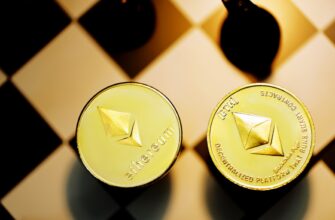## What is Cryptocurrency Mining?
Cryptocurrency mining is the computational process where specialized hardware validates transactions on a blockchain network. Miners solve complex mathematical puzzles to add new blocks to the chain, receiving newly minted coins as rewards. This decentralized verification system secures networks like Bitcoin while introducing new tokens into circulation. With evolving technology, mining remains accessible through various methods from home setups to industrial operations.
## Why Mine Cryptocurrency? Pros and Cons
### Advantages:
* **Earn passive income** through block rewards and transaction fees
* **Support blockchain decentralization** and network security
* **Potential asset appreciation** if mined coins increase in value
* **Educational opportunity** to understand blockchain mechanics
### Challenges:
* **High energy consumption** impacting profitability
* **Hardware costs** for competitive mining rigs
* **Technical complexity** requiring ongoing optimization
* **Market volatility** affecting coin values
## Top 7 Cryptocurrencies You Can Mine in 2023
1. **Bitcoin (BTC)** – The original mineable cryptocurrency requiring ASIC miners. High profitability but intense competition.
2. **Ethereum Classic (ETC)** – GPU-minable alternative to Ethereum after its transition to Proof-of-Stake.
3. **Monero (XMR)** – CPU-friendly coin prioritizing privacy with ASIC-resistant algorithms.
4. **Ravencoin (RVN)** – Designed for asset transfers, optimized for GPU mining with KawPoW algorithm.
5. **Zcash (ZEC)** – Privacy-focused coin mineable with GPUs or ASICs using Equihash.
6. **Dogecoin (DOGE)** – Merge-mined with Litecoin using Scrypt algorithm, popular for community support.
7. **Grin (GRIN)** – Mimblewimble-based privacy coin supporting both GPU and CPU mining.
## How to Choose Your Mining Cryptocurrency
Consider these critical factors before investing:
* **Profitability Calculators**: Use tools like WhatToMine or NiceHash to estimate earnings based on your hardware
* **Hardware Compatibility**: Match coins to your equipment (CPU for Monero, GPU for Ravencoin, ASIC for Bitcoin)
* **Energy Costs**: Calculate electricity expenses against projected rewards
* **Network Difficulty**: Higher difficulty means more competition and reduced rewards
* **Long-Term Viability**: Research project fundamentals and development activity
## Mining Methods Explained
### CPU Mining
Uses standard computer processors. Best for: Monero, VerusCoin.
*Pros: Low entry cost, energy-efficient*
*Cons: Limited profitability*
### GPU Mining
Utilizes graphics cards (NVIDIA/AMD). Best for: Ethereum Classic, Ravencoin.
*Pros: Flexible, resalable hardware*
*Cons: Higher power consumption*
### ASIC Mining
Dedicated machines for specific algorithms. Best for: Bitcoin, Litecoin.
*Pros: Unmatched efficiency*
*Cons: Expensive, quickly obsolete*
### Cloud Mining
Rent remote hash power. Best for: Beginners without hardware.
*Pros: No setup/maintenance*
*Cons: Scam risks, lower profits*
## Step-by-Step Mining Setup Guide
1. **Select your coin** based on hardware and profitability
2. **Acquire equipment**: Start with existing hardware or invest in GPUs/ASICs
3. **Install mining software**: Options include CGMiner (ASIC) or PhoenixMiner (GPU)
4. **Join a mining pool**: Combine resources with others (e.g., F2Pool, Ethermine)
5. **Configure wallet**: Set up secure crypto wallet for payouts
6. **Optimize settings**: Adjust power limits and overclocking for efficiency
7. **Monitor performance**: Track temperatures, hash rates, and earnings daily
## Frequently Asked Questions (FAQ)
**Q: Is crypto mining still profitable in 2023?**
A: Yes, with proper hardware selection and low electricity costs. ASIC Bitcoin mining and GPU mining of coins like ETC can yield returns.
**Q: Can I mine cryptocurrency on my laptop?**
A: Only low-difficulty coins like Monero are feasible, but profitability is minimal and may damage hardware.
**Q: How much does a mining rig cost?**
A: Entry-level GPU setups start at $800-$1,500. Professional ASIC miners range from $2,000-$12,000.
**Q: What’s the most energy-efficient coin to mine?**
A: VerusCoin (VRSC) and Monero (XMR) offer better energy efficiency than Bitcoin.
**Q: How long does it take to mine 1 Bitcoin?**
A: With one ASIC miner, approximately 10 years due to high difficulty. Pool mining provides fractional rewards faster.
**Q: Is cloud mining worth it?**
A: Rarely. Most contracts have hidden fees and low returns. Direct hardware mining is generally preferable.
**Q: Do miners pay taxes?**
A: Yes, mined coins are taxable income at fair market value upon receipt in most jurisdictions.
## Final Considerations
Successful mining requires continuous optimization and market awareness. Join communities like Reddit’s r/gpumining for real-time advice. As blockchain technology evolves, new mineable coins emerge—stay informed through resources like CoinWarz. With strategic planning, mining remains a viable gateway into the crypto ecosystem despite rising complexities. Always prioritize security: use dedicated wallets and enable two-factor authentication on all mining accounts.








